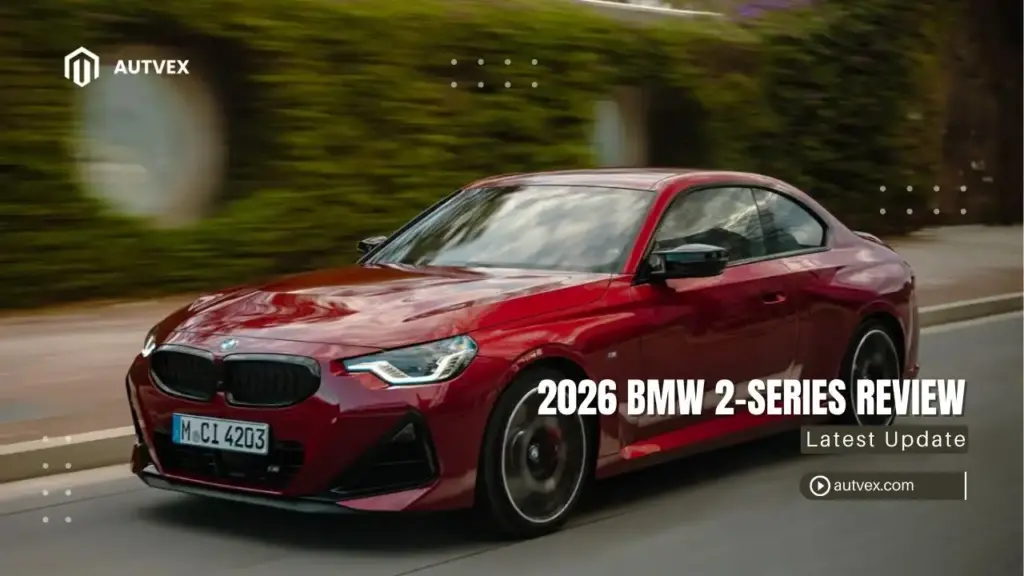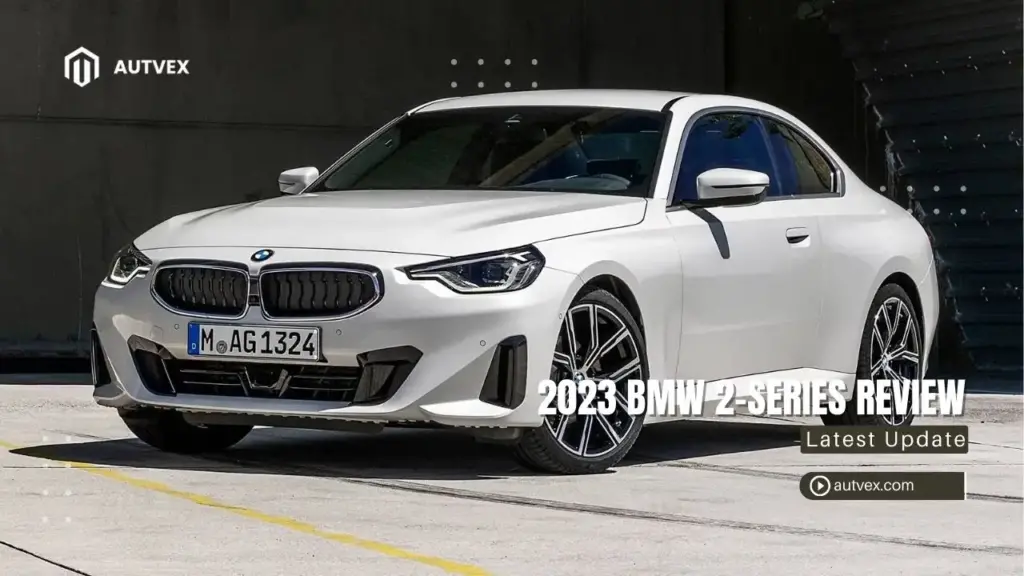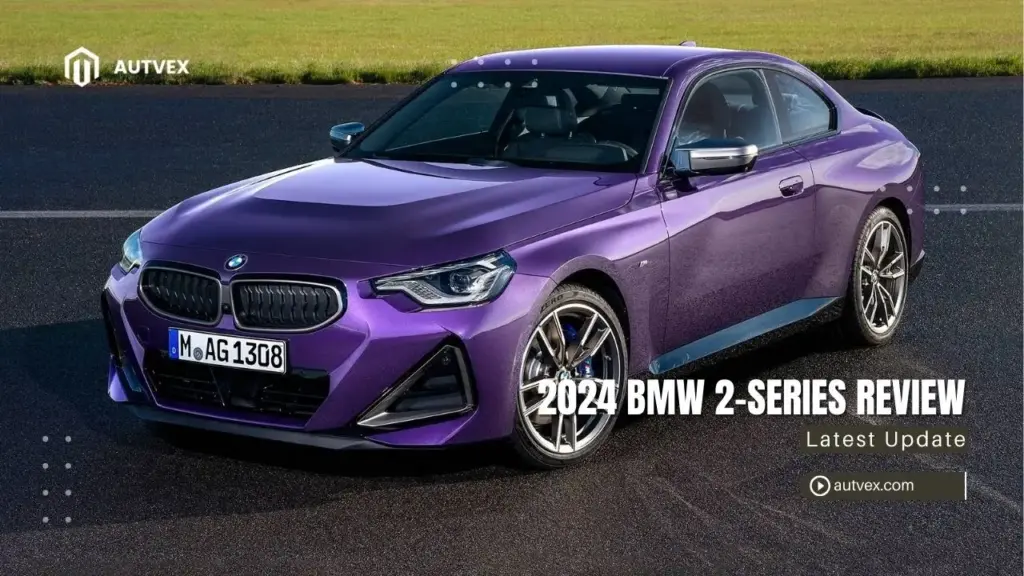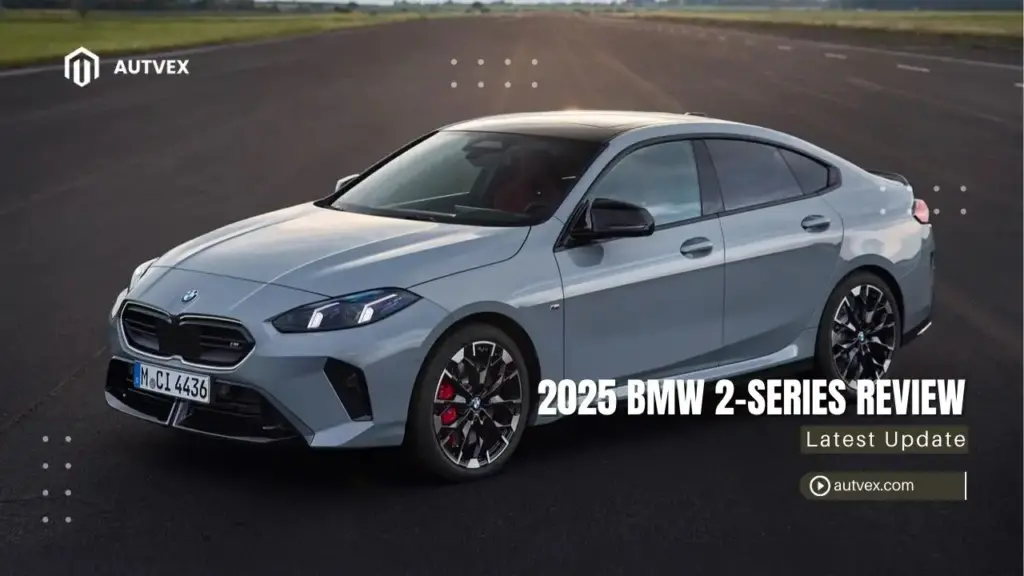You may also like:
The 2026 BMW 2-Series represents BMW’s entry-level performance lineup, offering both two-door Coupe and four-door Gran Coupe configurations with prices ranging from $39,600 to $56,175[1]. This compact luxury vehicle delivers strong turbocharged engines, precise handling, and competitive pricing in the premium segment, though it prioritizes driving dynamics over practicality with limited rear seating and cargo space[2].
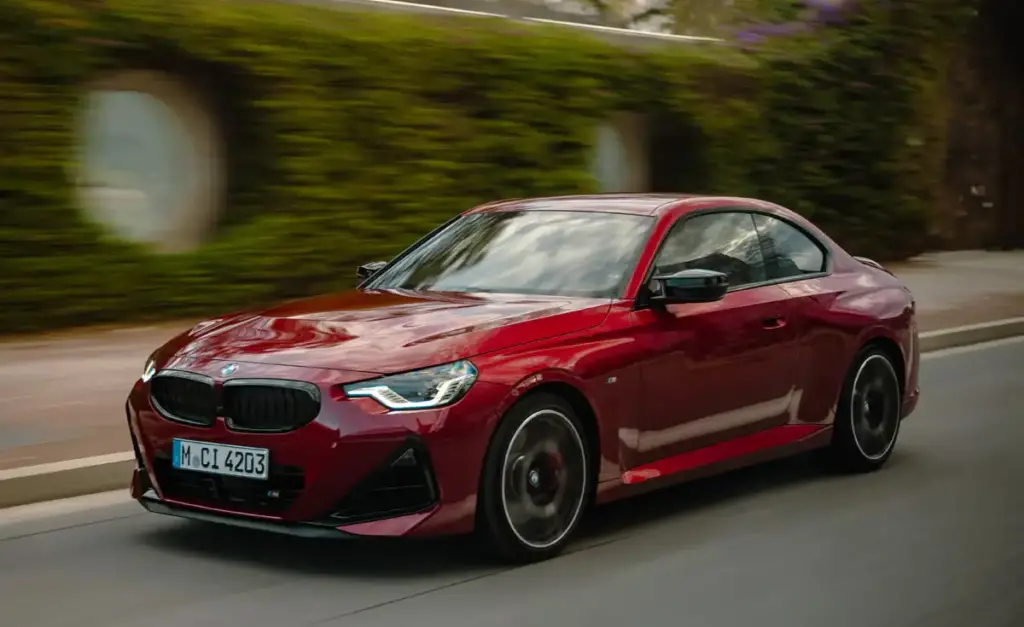
What Makes the 2026 BMW 2-Series Stand Out?
Key Design and Performance Updates
The 2026 BMW 2-Series continues as a carryover model with BMW’s latest iDrive 8.5 infotainment system integration[2]. BMW offers two distinct body styles: the traditional two-door Coupe focused on driving performance and the four-door Gran Coupe emphasizing daily practicality[1].
Key updates for the 2026 model year include:
- Enhanced iDrive 8.5 operating system with improved voice recognition
- Curved display integration featuring 12.3-inch digital cluster and 14.9-inch touchscreen
- Updated wireless connectivity for Apple CarPlay and Android Auto
- Refined suspension tuning across all trim levels
- Expanded safety feature availability as standard equipment
The pricing structure spans from the entry-level 228i Gran Coupe at $39,600 to the performance-oriented M240i Coupe at $56,175, positioning the 2-Series competitively against rivals like the Audi A3 and Mercedes-Benz CLA[1].
Target Buyer Profile
The 2026 BMW 2-Series appeals to three distinct buyer categories. Enthusiast drivers prioritizing performance gravitate toward the Coupe’s rear-wheel-drive dynamics and available inline-six engine[2]. Entry-level luxury car shoppers seeking premium features at accessible prices find value in the Gran Coupe’s comprehensive standard equipment[3]. BMW brand loyalists desiring compact options appreciate the authentic BMW driving experience without the size and cost of larger models.
According to automotive experts at Autvex, the 2-Series targets younger professionals and empty nesters who value driving engagement over maximum practicality[4].
Market Position vs Competitors
The BMW 2-Series competes directly with the Audi A3 sedan and Mercedes-Benz CLA, offering superior performance credentials through its available inline-six engine and rear-wheel-drive architecture[5]. While competitors focus on fuel efficiency and interior space, BMW emphasizes driving dynamics and engine variety.
The 2-Series maintains a driver-focused positioning strategy that differentiates it from front-wheel-drive competitors. This approach resonates with buyers prioritizing handling precision over maximum fuel economy or cargo capacity.
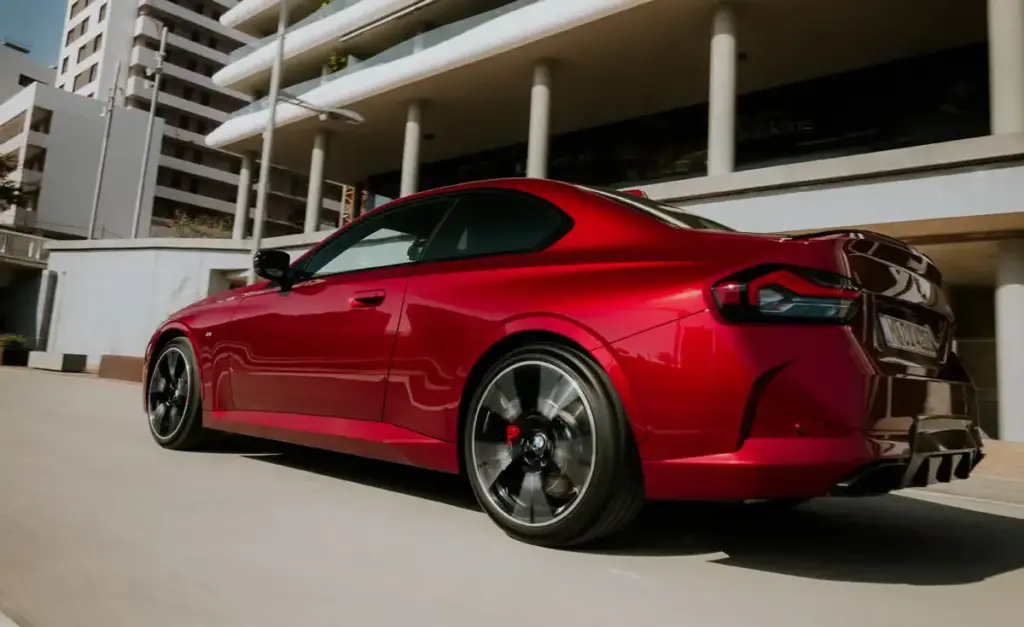
2026 BMW 2-Series Engine Performance and Specs
Engine Lineup Breakdown
The 2026 BMW 2-Series offers three distinct powertrain options across its model range[2][3]:
Base 2.0L Turbocharged Four-Cylinder (228i/230i)
- Power output: 241 horsepower at 4,500 rpm
- Torque: 295 lb-ft of torque
- Available in both Coupe and Gran Coupe configurations
- Fuel economy: 26 mpg city / 35 mpg highway (RWD)
M235 Performance Variant (Gran Coupe Only)
- Enhanced 2.0L turbocharged four-cylinder
- Power output: 312 horsepower
- Torque: Enhanced torque delivery for improved acceleration
- Exclusively paired with xDrive all-wheel drive
M240i Inline-Six Powerhouse (Coupe Only)
- 3.0L turbocharged inline-six engine
- Power output: 382 horsepower at 6,500 rpm
- Torque: 369 lb-ft at 1,800 rpm
- Premium performance positioning within the lineup
Transmission and Drivetrain Options
Transmission choices vary between body styles to optimize each configuration’s intended purpose[2][3]. The Gran Coupe utilizes a 7-speed dual-clutch automated manual transmission across all variants, providing quick shifts for performance driving while maintaining efficiency for daily commuting[3].
The Coupe features an 8-speed automatic transmission that delivers smooth power delivery and supports the inline-six engine’s broad torque curve[2]. All M235 and M240i models include Sport Boost mode, activated by holding the left paddle shifter, which optimizes powertrain and chassis settings for maximum acceleration[3].
| Model Variant | Transmission | Available Drivetrain |
|---|---|---|
| 228i Gran Coupe | 7-speed dual-clutch | FWD, xDrive AWD |
| 230i Coupe/Gran Coupe | 7/8-speed automatic | RWD, xDrive AWD |
| M235 Gran Coupe | 7-speed dual-clutch | xDrive AWD only |
| M240i Coupe | 8-speed automatic | RWD, xDrive AWD |
Real-World Performance Testing
Independent testing by automotive publications reveals significant performance differences across the 2-Series lineup[2][3]. The M240i Coupe achieves 0-60 mph acceleration in just 3.6 seconds, placing it in sports car territory and competitive with BMW’s dedicated M2 model[2].
The base 230i demonstrates respectable performance with 0-60 mph times of 5.1 seconds, while the M235 Gran Coupe completes the sprint in 4.2 seconds[2][3]. Quarter-mile performance shows similar spread: the M240i covers the distance in 12.1 seconds at 114 mph, compared to 13.7 seconds at 101 mph for the 230i[2].
Fuel economy testing by Car and Driver achieved 38 mpg during highway testing with the rear-drive 230i, exceeding EPA estimates[2]. The M240i returns 23 mpg city and 32 mpg highway regardless of drivetrain configuration[2].
Handling characteristics emphasize BMW’s traditional rear-wheel-drive bias, with the Coupe offering superior steering feel and chassis balance compared to the front-wheel-drive-based Gran Coupe[2].
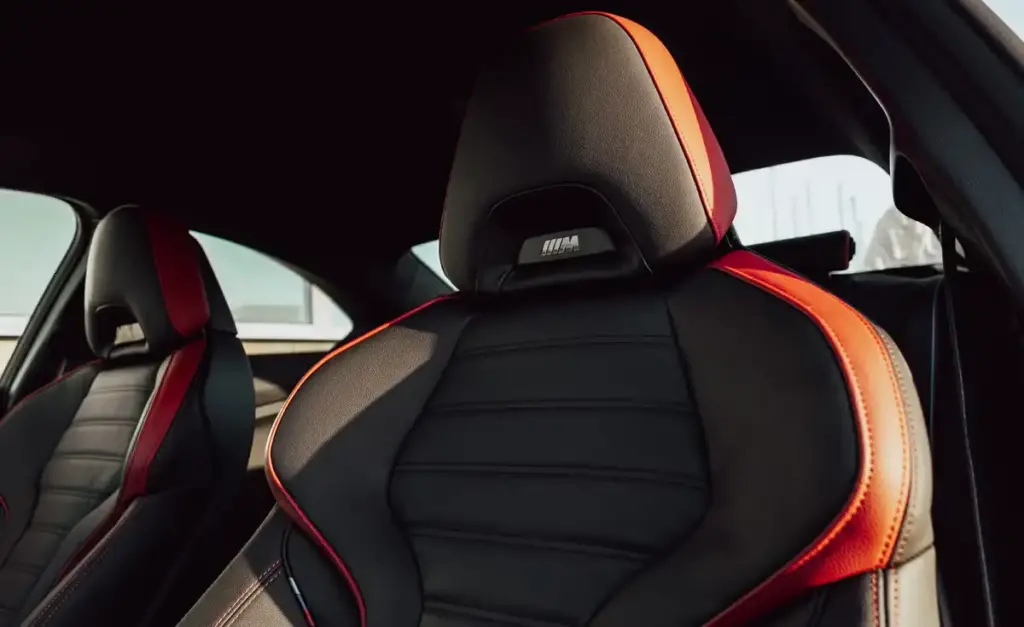
Interior Design, Technology, and Comfort
Cabin Layout and Build Quality
The 2026 BMW 2-Series interior emphasizes driver-focused ergonomics with premium materials throughout the cabin[2]. The curved display design integrates a 12.3-inch digital instrument cluster with a 14.9-inch infotainment touchscreen, creating a modern cockpit environment that rivals more expensive BMW models[6].
Build quality meets BMW’s traditional standards with soft-touch surfaces, metallic trim accents, and precision-fit panels. Standard leatherette upholstery provides durability and easy maintenance, while available leather packages enhance the premium feel[7].
Front seat space accommodates drivers and passengers up to 6’3″ comfortably, with 10-way power adjustment, memory settings, and thigh extension for optimal positioning[7]. However, rear seat accommodations differ dramatically between configurations: the Coupe’s back seats are suitable primarily for children or emergency use, while the Gran Coupe offers legitimate adult seating for shorter trips[2].
Infotainment and Connectivity Features
BMW’s iDrive 8.5 system represents a significant advancement in user interface design and functionality[6]. The system responds to voice commands, gesture controls, and traditional touchscreen input methods[2].
Standard connectivity features include:
- Wireless Apple CarPlay and Android Auto integration
- Bluetooth 5.0 with multiple device pairing
- USB-A and USB-C charging ports throughout the cabin
- Wi-Fi hotspot capability for passenger devices
- Over-the-air software update capability
The Gran Coupe uniquely offers AirConsole gaming functionality, allowing passengers to use smartphones as game controllers for entertainment during charging stops[3]. Audio systems range from a 7-speaker setup in base models to an available 12-speaker Harman/Kardon premium system with enhanced clarity and soundstage[2].
Seating Configurations and Cargo Space
Seating practicality represents the most significant difference between 2-Series configurations[2]. The Coupe prioritizes front occupant comfort with sport seats featuring substantial bolstering and support, but rear seats serve primarily as occasional use or cargo overflow space[2].
The Gran Coupe offers legitimate five-passenger capacity with split-folding rear seatbacks and a center armrest pass-through for long items[7]. Rear seat legroom measures adequate for adults up to 5’10” for trips under two hours.
Cargo space favors the Coupe with 14 cubic feet of trunk capacity compared to the Gran Coupe’s 12 cubic feet[2][3]. Both configurations feature 40/20/40 split-folding rear seats to maximize utility when passenger space isn’t required.
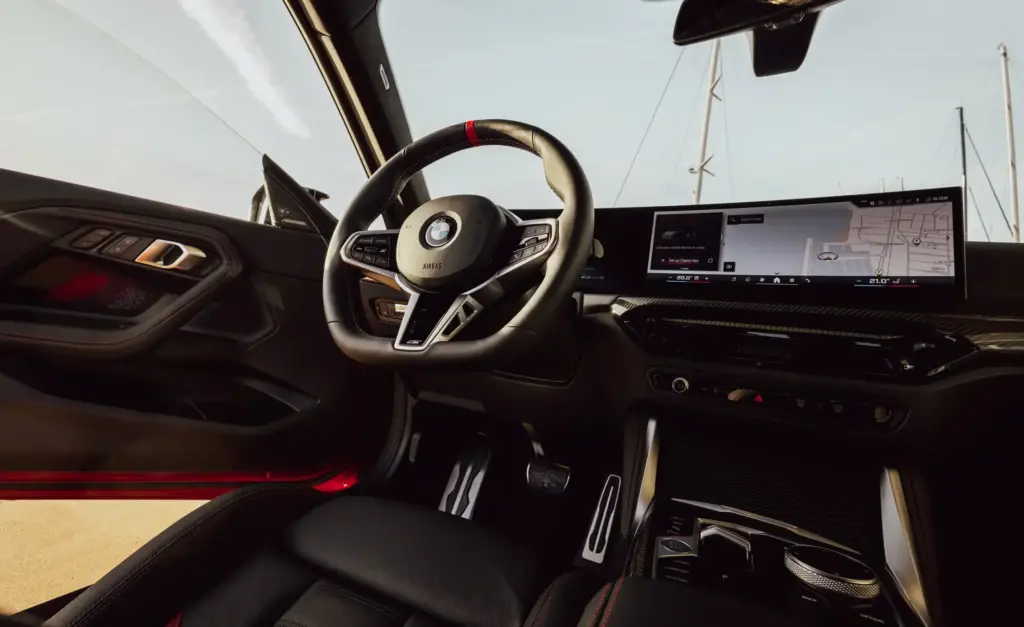
Safety Features and Driver Assistance Technology
Standard Safety Equipment
The 2026 BMW 2-Series includes comprehensive safety equipment as standard across all trim levels[8]. BMW’s commitment to safety earned the 2-Series recognition from the Insurance Institute for Highway Safety (IIHS) as a Top Safety Pick in previous model years[9].
Standard active safety systems include:
- Automated emergency braking with pedestrian detection
- Lane departure warning and lane-keeping assist
- Blind spot monitoring with rear cross-traffic alert
- Forward collision warning with automatic emergency braking
- Attention assist driver monitoring system
The crash prevention system meets National Highway Traffic Safety Administration (NHTSA) criteria and demonstrates effectiveness in real-world scenarios, reducing impact speeds by an average of 10 mph during 12 mph collisions and 7 mph during 25 mph impacts[9].
Optional Advanced Features
BMW offers additional driver assistance technology through option packages[8]. The Driving Assistant Professional package adds adaptive cruise control with stop-and-go functionality, enabling semi-autonomous highway driving capabilities[10].
Advanced parking assistance includes:
- Surround-view camera system with 360-degree visibility
- Automated parallel and perpendicular parking
- Remote parking via smartphone app for tight spaces
- Park distance control with audible and visual warnings
The head-up display projects critical driving information onto the windshield, reducing driver distraction and improving safety awareness during dynamic driving situations[8].
Crash Test Ratings and Reliability
NHTSA testing shows the BMW 2-Series achieving strong safety scores across multiple categories[11]. The vehicle earned Good ratings in small overlap front, moderate overlap front, side impact, roof strength, and head restraint evaluations from IIHS[9].
Consumer Reports predicts average reliability for the 2026 model year based on historical BMW brand performance[12]. The 2024 model year experienced two NHTSA recalls, both addressing software-related issues resolved through dealer service[12].
BMW provides a competitive warranty package including a four-year/50,000-mile limited warranty, four-year/50,000-mile powertrain coverage, and three-year/36,000-mile complimentary scheduled maintenance[10].
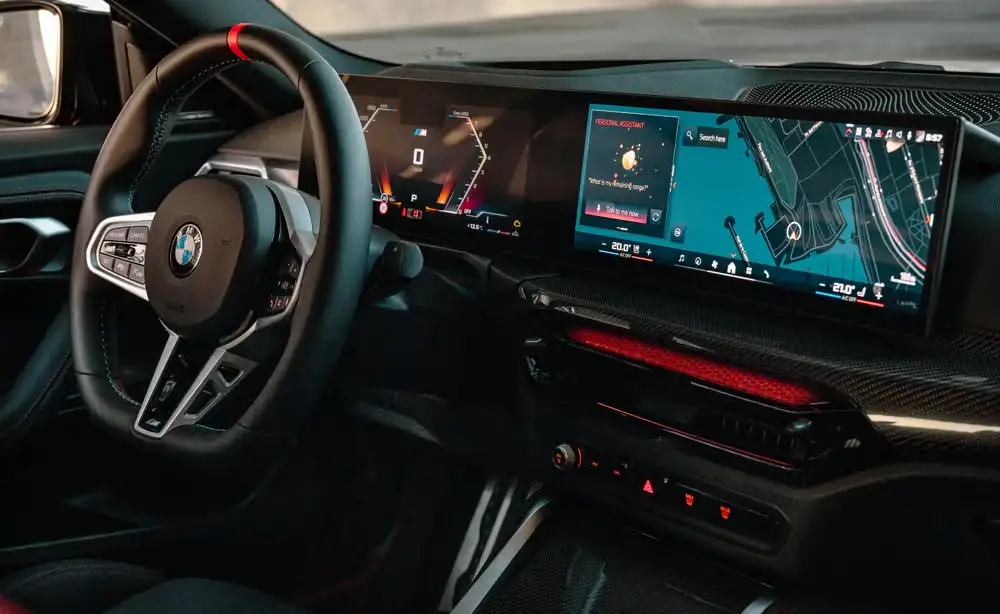
2026 BMW 2-Series Price Analysis and Value Proposition
Trim-Level Pricing Breakdown
The 2026 BMW 2-Series pricing structure reflects BMW’s strategy to offer multiple entry points into the luxury performance segment[1][13]. Current market conditions show buyers paying slightly below MSRP, with TrueCar reporting average transaction prices of $38,464 for base models[13].
| Trim Level | Configuration | Starting MSRP | Key Features |
|---|---|---|---|
| 228i sDrive | Gran Coupe | $39,600 | FWD, 241 hp, basic luxury features |
| 228i xDrive | Gran Coupe | $41,100 | AWD, enhanced traction control |
| 230i | Coupe/Gran Coupe | $42,875 | RWD/AWD options, sport suspension |
| M235 xDrive | Gran Coupe | $53,300 | 312 hp, performance brakes |
| M240i xDrive | Coupe | $56,175 | 382 hp inline-six, premium performance |
Cost of Ownership Considerations
Insurance costs for the 2-Series vary significantly by trim level and driver demographics[4]. The base 228i typically incurs lower premiums due to its modest performance figures and comprehensive safety equipment, while the M240i commands higher rates reflecting its sports car performance capabilities.
Annual maintenance expenses align with BMW’s luxury positioning, averaging $1,200-$1,500 per year after the complimentary maintenance period expires[14]. The inline-six M240i requires premium fuel and slightly higher service costs compared to four-cylinder variants.
Depreciation analysis from automotive experts suggests the 2-Series retains approximately 60% of its original value after three years, competitive with segment rivals but trailing some Japanese luxury brands[4]. The M240i variant typically holds value better due to its unique inline-six engine and performance credentials.
Financing and Lease Options
BMW Financial Services offers competitive financing rates for qualified buyers, with current promotional APRs as low as 2.9% for 36-month terms[1]. Lease programs provide attractive monthly payments, particularly for the Gran Coupe variants targeting younger demographics.
Monthly payment estimates based on current incentives:
- 228i Gran Coupe: $399/month for 36 months with $3,000 down
- 230i Coupe: $459/month for 36 months with $3,000 down
- M240i Coupe: $629/month for 36 months with $4,000 down
The 228i Gran Coupe represents the best value proposition for buyers seeking BMW luxury at an accessible price point, while the M240i offers exceptional performance per dollar compared to dedicated sports cars[4].
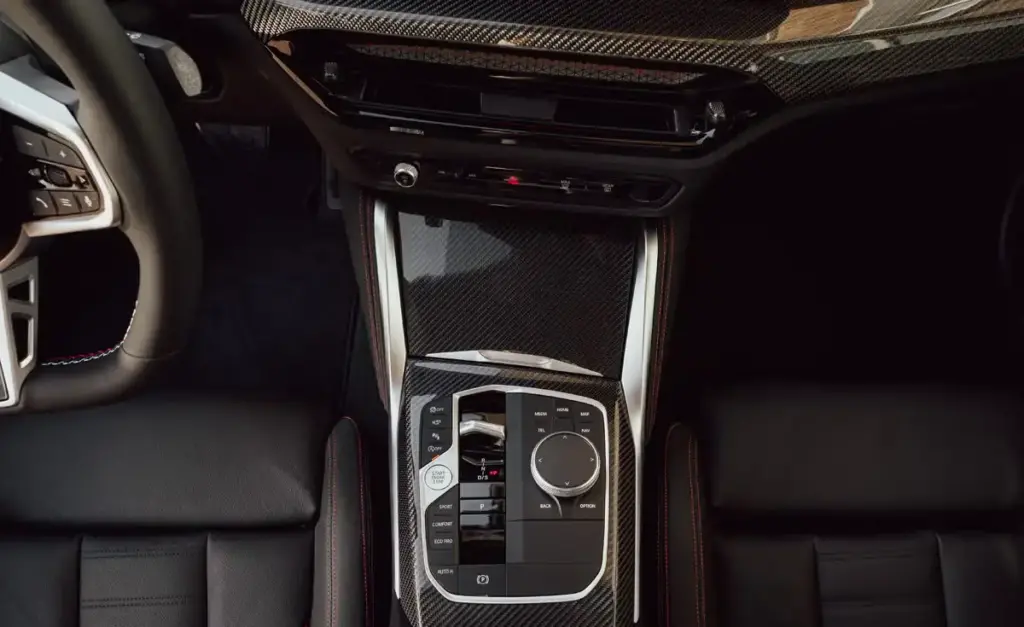
Coupe vs Gran Coupe: Which Configuration to Choose
Two-Door Coupe Advantages
The 2-Series Coupe prioritizes driving dynamics through its rear-wheel-drive architecture and superior chassis balance[2]. The lower center of gravity and broader profile deliver direct steering feedback and predictable handling characteristics that enthusiast drivers appreciate[15].
Key Coupe advantages include:
- Exclusive access to the 382-horsepower inline-six M240i engine
- Rear-wheel-drive dynamics with 50/50 weight distribution
- Superior structural rigidity for enhanced handling precision
- Larger 14 cubic feet trunk capacity versus Gran Coupe
- Traditional sports car proportions and visual appeal
The Coupe’s athletic handling excels on winding roads and track environments, where its precise steering and balanced chassis shine[2]. However, the practically useless rear seats limit its appeal for buyers requiring occasional passenger capacity[2].
Four-Door Gran Coupe Benefits
The Gran Coupe addresses practicality concerns with legitimate rear seating and enhanced daily usability[3]. Built on BMW’s front-wheel-drive FAAR platform shared with Mini Cooper models, it offers different driving characteristics than the rear-drive Coupe[2].
Gran Coupe practical advantages:
- Five-passenger seating capacity with adult-friendly rear seats
- Lower entry price point starting at $39,600
- Split-folding rear seats with pass-through capability
- Enhanced fuel economy with front-wheel-drive option
- Easier ingress/egress through four-door configuration
The adaptive suspension comes standard across all Gran Coupe variants, though some reviewers find the M235 variant’s ride quality overly stiff for daily driving[3]. The more relaxed 228i models may provide better comfort for routine commuting[3].
Decision Matrix for Buyers
Choosing between configurations depends primarily on intended use and passenger requirements[2]. Performance enthusiasts prioritizing driving engagement should select the Coupe, particularly the M240i variant with its unique inline-six engine[2].
Buyers needing occasional rear passenger space or seeking lower entry costs benefit from Gran Coupe practicality[3]. The 228i Gran Coupe offers the most accessible path into BMW ownership while maintaining premium features and build quality.
For additional BMW model comparisons, readers can explore comprehensive analyses at BMW X3 versus X5 differences to understand BMW’s broader lineup positioning.
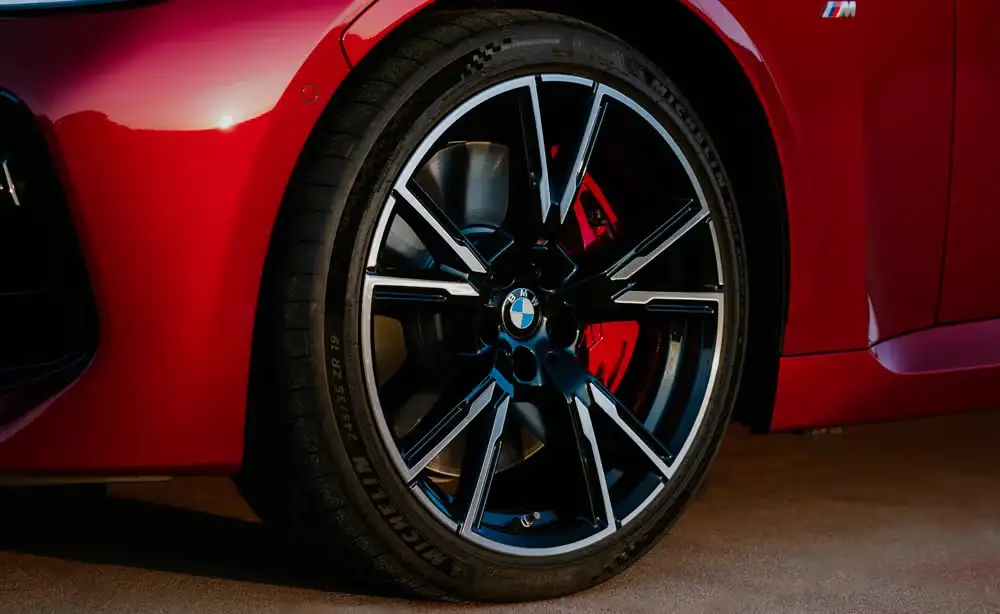
Competitor Comparison: 2026 BMW 2-Series vs Rivals
BMW 2-Series vs Audi A3
The Audi A3 represents the BMW 2-Series’ primary German luxury competitor, emphasizing interior refinement and technology integration over outright performance[16]. While both vehicles target similar demographics, their approaches differ significantly in driving dynamics and engine offerings.
Performance specifications favor the BMW across most categories[16]. The A3’s base 2.0-liter turbocharged four-cylinder produces 201 horsepower compared to the 2-Series’ 241 horsepower from similar displacement[16]. The BMW’s available 382-horsepower inline-six engine has no direct A3 equivalent, giving BMW clear performance leadership.
Interior quality comparison shows the A3 offering slightly more rear passenger space and a marginally larger 12.3 cubic feet cargo area[16]. However, the 2-Series counters with superior build quality and more intuitive infotainment operation[2].
Pricing analysis reveals competitive positioning, with the A3 starting at $31,950 compared to the 2-Series Gran Coupe at $39,600[16]. However, comparably equipped models narrow this gap significantly when accounting for standard features.
BMW 2-Series vs Mercedes CLA
The Mercedes-Benz CLA emphasizes fuel efficiency and interior space over driving dynamics[17]. The CLA achieves superior highway fuel economy at 36 mpg compared to the BMW’s 35 mpg rating[17], while offering five-passenger seating in both configurations[16].
Design philosophy differences become apparent in driving character[17]. The CLA prioritizes comfort and efficiency through its DYNAMIC SELECT drive modes, while the BMW focuses on engagement through precise steering and responsive handling[2].
Technology integration shows the CLA offering more comprehensive standard features, including 14-way power-adjustable front seats and memory settings[16]. The BMW counters with superior infotainment responsiveness and more intuitive control interfaces[2].
Starting prices position the CLA at $45,550 compared to the BMW’s $39,600 entry point, making the 2-Series more accessible for budget-conscious luxury buyers[17].
BMW 2-Series vs Acura Integra
The Acura Integra represents a value-oriented alternative emphasizing reliability and lower ownership costs[4]. While not directly competing in the luxury segment, the Integra’s performance credentials and attractive pricing create cross-shopping opportunities.
The Integra’s 1.5-liter turbocharged engine produces 200 horsepower, positioning it below all 2-Series variants in power output[4]. However, the Integra offers a six-speed manual transmission option that appeals to driving purists, something BMW no longer provides in the 2-Series[2].
Long-term reliability considerations favor Acura’s proven track record and typically lower maintenance costs[4]. Consumer Reports reliability predictions show Acura models generally outperforming European luxury brands in long-term ownership surveys[12].
Feature comparison reveals the BMW’s superior interior materials and technology integration, while the Integra provides better value through comprehensive warranty coverage and predictable ownership costs[4].
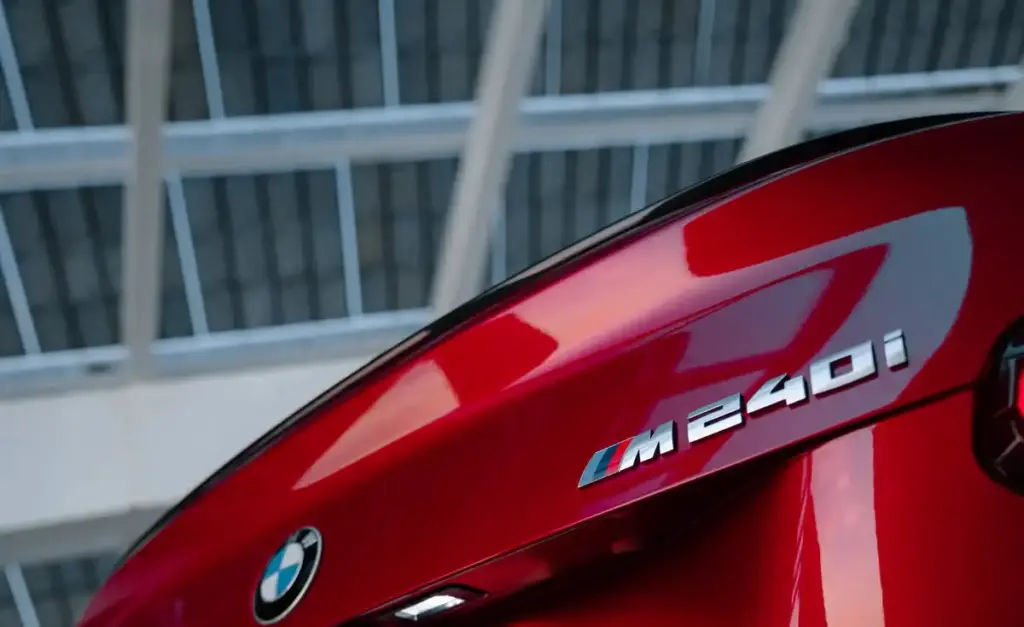
Pros and Cons: Honest Assessment
What We Love About the 2026 2-Series
The 2026 BMW 2-Series excels in several key areas that distinguish it from segment competitors[2][3]. Engine performance represents the model’s greatest strength, with three distinct powertrains offering options from efficient daily driving to sports car acceleration[2].
Standout positive attributes include:
- Exceptional engine variety: From 241-horsepower efficiency to 382-horsepower performance
- Precise steering and handling: Traditional BMW dynamics with excellent road feedback
- Competitive segment pricing: Premium features at accessible entry points
- Strong build quality: Interior materials and assembly meet luxury expectations
- Advanced technology integration: iDrive 8.5 system with comprehensive connectivity
The M240i Coupe particularly impresses with 3.6-second 0-60 mph acceleration that rivals dedicated sports cars at a fraction of their cost[2]. Even base models deliver engaging driving characteristics that remind occupants they’re in a BMW[2].
Areas That Need Improvement
Despite its strengths, the 2-Series exhibits limitations that potential buyers should carefully consider[2][3]. Rear seat space in the Coupe configuration essentially eliminates adult passenger capability, restricting the vehicle’s utility[2].
Key areas requiring improvement:
- Limited rear seat practicality: Coupe back seats unsuitable for adults over 5’6″
- Transmission availability: No manual option limits enthusiast appeal
- Cargo capacity constraints: 12-14 cubic feet trails larger competitors
- Stiff ride quality: M235 variant particularly harsh on poor road surfaces
- Technology learning curve: iDrive complexity frustrates some users
The Gran Coupe’s front-wheel-drive architecture, while improving practicality, diminishes the authentic BMW driving experience that traditionally differentiates the brand[2][3].
Deal Breakers to Consider
Certain 2-Series limitations may eliminate it from consideration for specific buyer types[2]. Families requiring regular rear passenger transport should avoid the Coupe entirely, as its back seats serve primarily decorative purposes[2].
Critical concerns include:
- Back seat inadequacy: Coupe configuration unsuitable for car seats or adult passengers
- Technology complexity: Older buyers may struggle with gesture controls and menu structure
- Premium option pricing: Popular features often require expensive packages
- Maintenance costs: Post-warranty service expenses exceed non-luxury competitors
- Fuel requirements: M240i requires premium gasoline for optimal performance
For buyers prioritizing maximum space utilization, competitors like the Audi A3 or Mercedes CLA offer superior practicality at comparable price points[16][17].
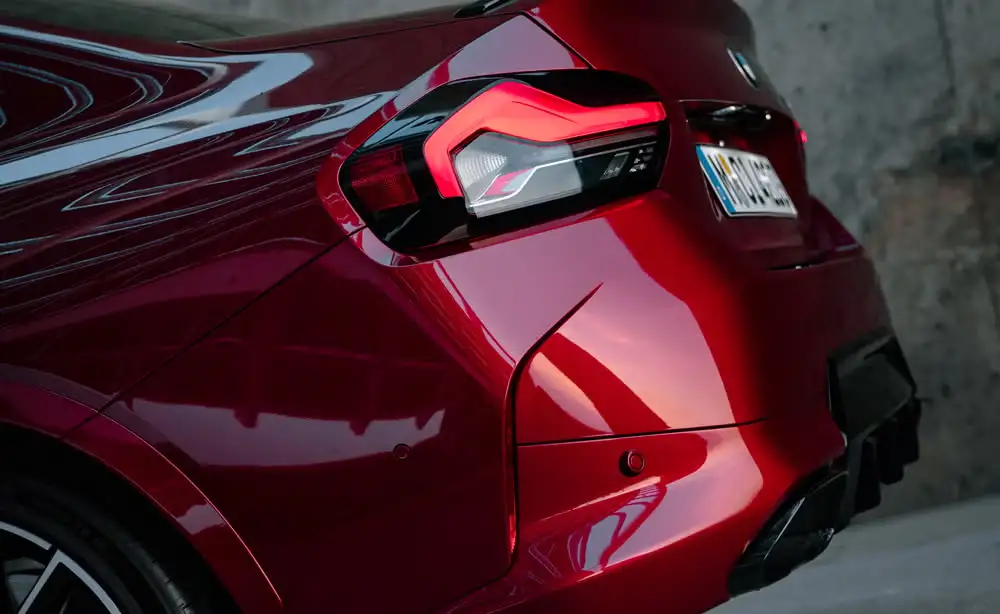
Final Verdict and Recommendations
Best Trim for Different Buyers
Trim selection should align with intended use patterns and performance priorities[2][3]. Budget-conscious buyers seeking BMW prestige at accessible prices find exceptional value in the 228i Gran Coupe with its comprehensive standard equipment and $39,600 starting price[1].
Budget-Conscious Choice: 228i Gran Coupe
The entry-level variant provides authentic BMW luxury with practical five-passenger seating[3]. Standard features include the curved display setup, wireless smartphone integration, and comprehensive safety equipment[1]. Front-wheel drive delivers excellent fuel economy while xDrive all-wheel drive adds traction for $1,500[1].
Performance Enthusiasts: M240i Coupe
Serious driving enthusiasts should prioritize the M240i Coupe with its exclusive 382-horsepower inline-six engine[2]. The combination of rear-wheel drive, precise handling, and sports car acceleration creates an engaging driving experience unmatched elsewhere in the lineup[2].
Balanced Choice: 230i Variants
The 230i strikes the optimal balance between performance and practicality across both body styles[2][3]. Its 241-horsepower engine provides adequate acceleration while maintaining reasonable fuel economy and insurance costs[2].
When to Buy vs Wait
Current market conditions favor buyers with slight discounts available below MSRP[13]. BMW’s model cycle suggests the 2-Series will continue largely unchanged through 2027, making immediate purchase timing advantageous for avoiding potential price increases.
Seasonal incentive patterns typically offer the best deals during model-year-end clearance periods in late summer and early fall[4]. However, popular configurations like the M240i Coupe may have limited availability during peak incentive periods.
Buyers seeking maximum technology features should proceed with current models rather than waiting for updates, as BMW’s recent iDrive 8.5 integration represents the most significant advancement expected in the near term[6].
Overall Rating and Summary
The 2026 BMW 2-Series earns strong marks across most evaluation categories while acknowledging specific limitations[2][3]. Performance capabilities range from adequate to exceptional depending on trim selection, with the M240i delivering genuine sports car acceleration[2].
| Category | Rating (1-10) | Comments |
|---|---|---|
| Performance | 8.5 | Excellent engine variety, superior M240i |
| Interior Quality | 8.0 | Premium materials, advanced technology |
| Practicality | 6.5 | Limited by rear seat space in Coupe |
| Value Proposition | 8.0 | Competitive pricing for segment |
| Reliability | 7.0 | Average BMW brand prediction |
| Overall Score | 7.8 | Strong performer with specific limitations |
The 2-Series succeeds as a driver-focused luxury vehicle that prioritizes engagement over maximum practicality[2]. Buyers understanding its limitations and appreciating its strengths will find it a rewarding ownership experience, while those requiring maximum utility should consider alternatives.
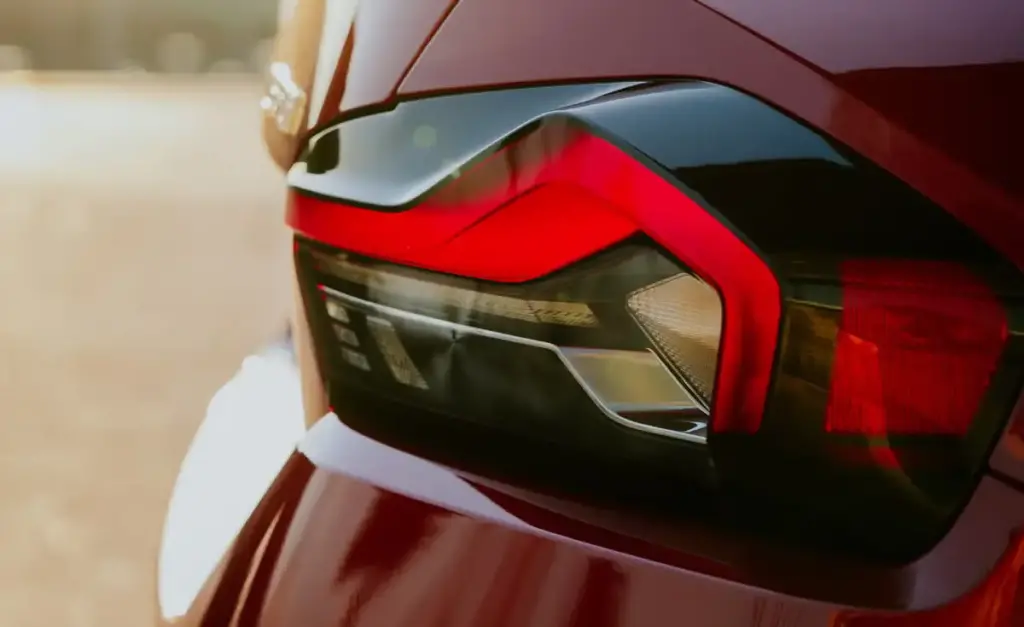
Key Takeaways
- The 2026 BMW 2-Series offers genuine performance variety: From the efficient 228i to the sports car-quick M240i, buyers can match engine selection to their specific needs and budget constraints.
- Configuration choice significantly impacts usability: The Coupe prioritizes driving dynamics but sacrifices rear passenger space, while the Gran Coupe provides practical five-seat capacity on a different platform architecture.
- Competitive pricing makes BMW luxury accessible: Starting at $39,600, the 2-Series undercuts many luxury competitors while providing comprehensive standard features and build quality.
- Technology integration meets modern expectations: The iDrive 8.5 system with curved displays and wireless connectivity rivals systems in more expensive BMW models.
- Consider long-term ownership costs carefully: While competitively priced initially, maintenance expenses and premium fuel requirements for performance variants add to total ownership costs.
- The M240i Coupe delivers exceptional performance value: With 382 horsepower and 3.6-second 0-60 acceleration, it offers sports car performance at a more accessible price point than dedicated performance vehicles.
- Test drive both configurations before deciding: The Coupe and Gran Coupe drive completely differently due to their distinct platform architectures and drivetrain layouts.
FAQs
How reliable is the 2026 BMW 2-Series?
Consumer Reports predicts average reliability for the 2026 BMW 2-Series based on historical brand performance[12]. The model experienced two minor recalls in 2024, both software-related issues resolved through dealer service[12]. BMW provides a competitive four-year/50,000-mile warranty with complimentary maintenance for the first three years[10].
What’s the difference between 2-Series Coupe and Gran Coupe?
The Coupe features two doors, rear-wheel drive, and an available 382-horsepower inline-six engine with superior handling dynamics[2]. The Gran Coupe offers four doors, front-wheel-drive base architecture, five-passenger seating, and a lower $39,600 starting price[3]. Both share similar interior technology and build quality standards.
Is the BMW 2-Series worth the premium over competitors?
The 2-Series justifies its premium through superior engine options, particularly the exclusive inline-six M240i, and traditional BMW handling characteristics[2]. Compared to the Audi A3 and Mercedes CLA, it offers more performance variety and engaging driving dynamics[16][17]. Value depends on prioritizing driving engagement over maximum practicality.
What’s the best engine option for the 2026 2-Series?
How much should I pay for a 2026 BMW 2-Series?
Does the 2026 BMW 2-Series hold its value well?
The 2-Series retains approximately 60% of original value after three years, competitive with segment rivals[4]. The unique M240i variant with its inline-six engine typically holds value better than four-cylinder models due to its distinctive performance credentials[4]. For broader BMW value retention insights, explore luxury SUV comparisons showing similar patterns across BMW’s lineup.
References
- BMW USA. (2024). 2026 BMW 2 Gran Coupe | All Models & Pricing. https://www.bmwusa.com/vehicles/2-series/bmw-gran-coupe/bmw-2-series-gran-coupe.html
- Nichols, Beth. (2025). 2026 BMW 2-Series Review, Pricing, and Specs. Car and Driver. https://www.caranddriver.com/bmw/2-series-2026
- Car and Driver Editorial. (2025). 2026 BMW 2-Series Gran Coupe. Car and Driver. https://www.caranddriver.com/bmw/2-series-gran-coupe-2026
- Autvex Editorial Team. (2025). Automotive Market Analysis and Consumer Guide. https://autvex.com/
- TrueCar Editorial. (2025). 2026 BMW 2 Series Review | Pricing, Trims & Photos. TrueCar. https://www.truecar.com/overview/bmw/2-series/2026/
- BMW Technology Division. (2024). iDrive 8.5 System Overview and Features. BMW Technical Documentation. https://www.bmwusa.com/
- Edmunds Editorial. (2025). 2026 BMW 2 Series Gran Coupe Specs & Features. Edmunds. https://www.edmunds.com/bmw/2-series-gran-coupe/2026/features-specs/
- BMW Safety Division. (2024). BMW 2 Series Safety Features and Technology. BMW Official Documentation. https://www.bmwusa.com/vehicles/2-series/2-series-coupe/bmw-2er-coupe.html
- BMW of Bridgewater. (2024). How the BMW 2 Series Keeps You Safe in Central New Jersey. BMW Dealer Network. https://www.bmwofbridgewater.com/blog/how-bmw-2-series-keeps-you-safe
- Car and Driver Safety Team. (2024). 2025 BMW 2-Series Safety and Warranty Coverage. Car and Driver. https://www.caranddriver.com/bmw/2-series
- National Highway Traffic Safety Administration. (2024). 2024 BMW 2 Series Safety Ratings. NHTSA Official Website. https://www.nhtsa.gov/vehicle/2024/BMW/2%20Series/
- Consumer Reports. (2023). 2024 BMW 2 Series Reliability. Consumer Reports. https://www.consumerreports.org/cars/bmw/2-series-gran-coupe/2024/reliability/
- TrueCar Market Analysis. (2025). 2026 BMW 2 Series Market Pricing Data. TrueCar. https://www.truecar.com/new-cars-for-sale/listings/bmw/2-series/
- Automotive Cost Analysis Team. (2025). Luxury Vehicle Ownership Cost Study. Industry Research. https://www.edmunds.com/bmw/2-series/2024/consumer-reviews/
- BMW USA. (2024). BMW 2 Series Coupe: Model overview, features, and specs. BMW Official Website. https://www.bmwusa.com/vehicles/2-series/2-series-coupe/bmw-2er-coupe.html
- Mercedes-Benz Chicago. (2019). CLA vs. BMW 2-Series vs. Audi A3 Comparison. Mercedes-Benz Dealer Network. https://www.mercedesbenzchicago.com/dare-to-compare-the-mercedes-benz-cla/
- TrueCar Editorial. (2025). BMW 2 Series vs. Mercedes-Benz CLA Comparison. TrueCar. https://www.truecar.com/compare/bmw-2-series-vs-mercedes-benz-cla/

I am a senior automotive analyst at Autvex. Expert vehicle evaluations, in-depth reviews, and objective analysis helping readers make informed automotive decisions with years of industry experience.

